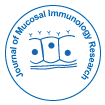MDSC Inhibitor Therapy in Myeloproliferative Neoplasm
Received: 07-Jan-2021 / Accepted Date: 21-Jan-2021 / Published Date: 28-Jan-2021 DOI: 10.4172/jmir.1000129
Description
We had published an article “Myeloid suppressor cells in Myeloproliferative Neoplasm“in Leukemia Research [1]. Hereby, we would like to write a commentary note as an extension for that article. In that article, we had described that Myeloid Suppressor Cells (MDSC) were increased in classical Philadelphia chromosome negative (ph(-)) Myeloproliferative Neoplasm (MPN) including Polycythemia Vera (PV), Essential Thrombocythemia (ET), and Primary Myelofibrosis (PMF).
MDSC Cells
MDSC-like cells were first described in the early 1900, with progression of tumor, increase in Extramedullary Haematopoiesis (EMH) and neutrophilia that was later shown to result in immune evasion and tumor vascularization [2]. The nomenclature and phenotypic heterogeneity of these cells which included immature Myeloid Cells (iMCs), Myeloid Suppressor Cells (MSCs), and Gr1+ myeloid cells [3-6] was confusing and a consensus was reached, identifying MDSC as the terminology to be used for this cellular phenotype and function in 2007 [7]. In summary, in mice, Mouse MDSC co-expressed CD11b and Gr1, is classified in two major groups: monocytic MDSC (M-MDSC), with a CD11b+Ly6Glow/ −Ly6Chigh phenotype, and granulocytic or polymorphonuclear MDSC (PMN-MDSC), with a CD11b+Ly6G+Ly6Clow/− phenotype [8]. Since no human equivalent of Gr1+ exists, there is no unequivocal manner to phenotype human MDSC. M-MDSC are mostly described as CD14+HLA-DRlow/−, or as CD11b+CD33+CD14+HLA-DRlow/ −, whereas PMN- MDSC are mostly described as CD11b +CD33+CD15+HLA-DR− [9,10].
Immunity Studies in MPN
Barosi had reviewed immune dysregulation in MPN [11], summarized as 1) auto-immune diseases were predisposed to and associated with MPN, 2) increased immune cells with monocytes and macrophages resulting in inflammatory cytokines, 3) controversyabout the increase or decrease of Treg cells, 4) dysfunction of CD4+/NK cells. We also reported that PD-1 and PD-L1 were increased in MPN [12]. Increased MDSC in MPN published by us [1], further added to the dimension of immune dysregulation in MPN. Lately, we also found TLR 2 levels were elevated in patients with MPN [13]. We speculated that increased MDSC cells in MPN were likely related to the chronic inflammatory process in MPN [14] with derangements of TLR pathway leading to the formation of MDSC through increased production of inflammatory cytokines leading to the defective maturation of MDSC [15,16].
Prospect of MDSC in the Advance of Therapy in MPN
Dr.Tefferi’s [17] opinion that in treating MF patients, the only treatment modality that is currently capable of prolonging survival or potential cure in MF is allogeneic stem cell transplant (ASCT). Current drug therapy for PMF is mostly palliative in scope and has not been shown to favorably modify disease’s natural history or prolong survival; specifically, JAK2 inhibitor treatment in PMF has not been shown to reverse bone marrow fibrosis or induce complete or partial remissions; instead, its value is limited to symptomatic relief and reduction in spleen size. Exploration of other therapeutic options will be necessary to further advance therapy in MPN. An option for advancing therapy in MPN may be to decrease MDSC levels in MPN diseases by which to restore the immune function of suppressed immune cells. MDSC can be decreased by 1)All- Trans Retinoic Acid (ATRA): ATRA binds to the retinoic acid receptor and blocks the retinoic acid signal transduction, which then causes MDSC to differentiate into DC and macrophages [18]. 2) Chemotherapy: using gemcitabine was shown to reduce the frequency of MDSC and Treg as well as TGF-β1 level but not T cells in the peripheral blood of pancreatic cancer patients [19]. 3) Bruton's Tyrosine Kinase (BTK) inhibitor. Notably MDSC were found to express Bruton’s Tyrosine Kinase (BTK), and Ibrutinib covalently binds to cysteine residues immediately outside the ATP-binding pocket of BTK [20]. Targeting BTK in malignant B cells with ibrutinib has been shown to have great effects on the response rate and survival in B cell lymphoid neoplasms [21]. Reports have also shown a role for BTK in Toll-like receptor (TLR) signaling in myeloid cells [22,23].We have reported that TLR signaling is enhanced in MPN [13], therefore by employing Ibrutinib which suppresses MDSC and TLR signaling in myeloid cells may have effects on MPN. PD- 1 inhibitor therapy in treating myelofibrosis was reported lately as a negative study, failed to achieve clinical activities, [24] Targeting MDSC in murine tumor models enhances the efficacy of immune-based therapies such as PD-1/PD-L1 checkpoint blockade [24-27]. Therefore, clinical trial with adding MDSC inhibitor to the immune check-check point inhibitor may be worthwhile in the treatment of MPN and need to be explored in the future studies.
References
- Sonnenfeld A. (1929) Leukamische reaktiones bei carcinoma. Zeitschrift f Klin Med 111.
- Bronte V, Apolloni E, Cabrelle A, Ronca R, Serafini P, et al. (2000) Identification of a CD11b(+)/Gr-1(+)/CD31(+) myeloid progenitor capable of activating or suppressing CD8(+) T cells. Blood 96(12):3838-3846.
- Byrd JC, Hillmen P, O'Brien S, Barrientos JC, Reddy NM, et al. (2019) Long-term follow-up of the RESONATE phase 3 trial of ibrutinib vs ofatumumab. Blood 133(19):20310-2042.
Citation: Wang JC, Oo Z. (2021) MDSC Inhibitor Therapy in Myeloproliferative Neoplasm. J Mucosal Immunol Res 5: 129. DOI: 10.4172/jmir.1000129
Copyright: © 2021 Wang JC, et al. This is an open-access article distributed under the terms of the Creative Commons Attribution License, which permits unrestricted use, distribution, and reproduction in any medium, provided the original author and source are credited.
Select your language of interest to view the total content in your interested language
Share This Article
Recommended Journals
Open 91桃色 Journals
Article Tools
Article Usage
- Total views: 2224
- [From(publication date): 0-2021 - Aug 06, 2025]
- Breakdown by view type
- HTML page views: 1434
- PDF downloads: 790
